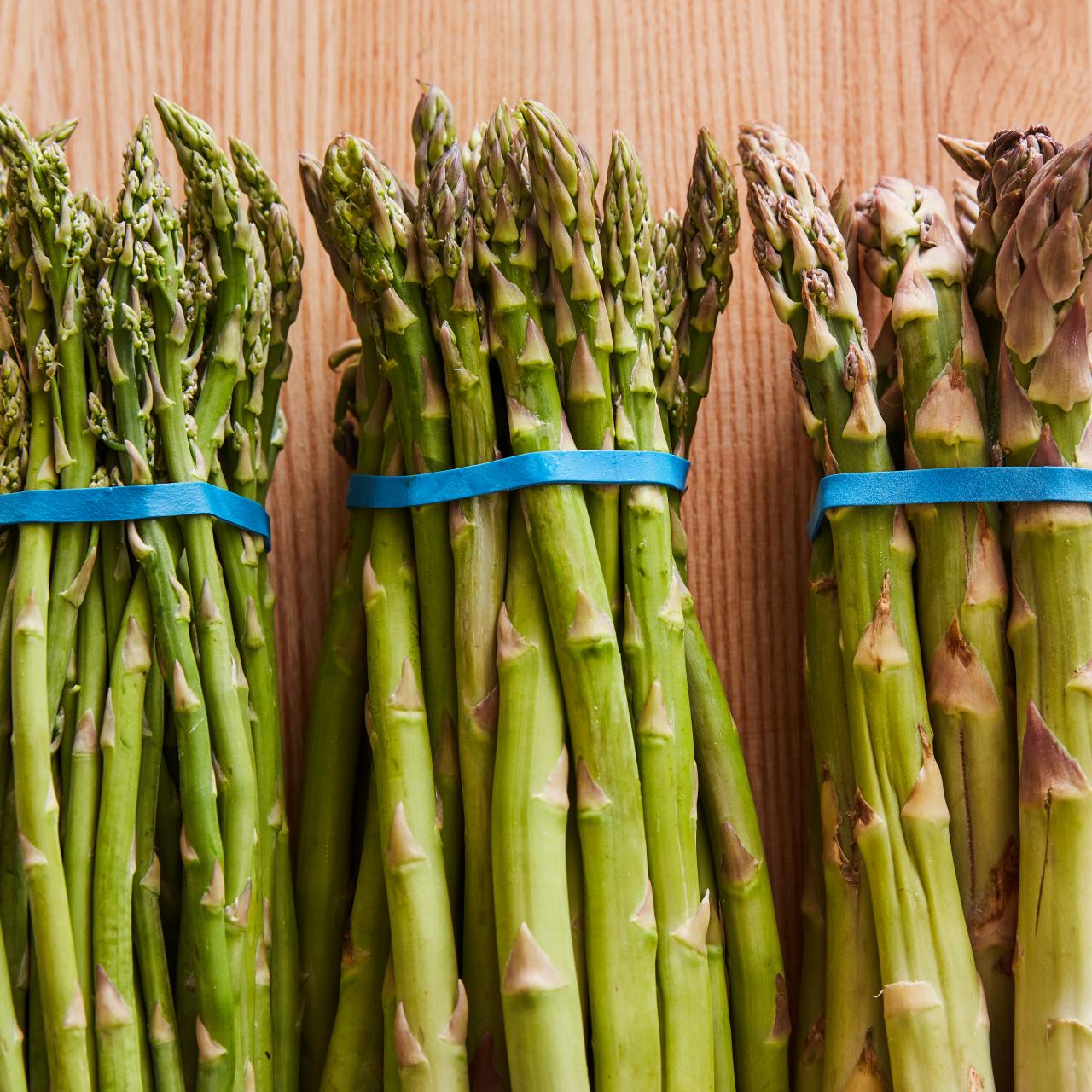

Articles
How To Store Asparagus Before Cooking
Modified: January 6, 2024
Learn the best methods for storing asparagus before cooking in this informative article. Keep your asparagus fresh and flavorful for longer!
(Many of the links in this article redirect to a specific reviewed product. Your purchase of these products through affiliate links helps to generate commission for Storables.com, at no extra cost. Learn more)
Introduction
Welcome to the world of asparagus! This versatile and delicious vegetable has gained popularity in recent years due to its health benefits and culinary versatility. Whether you prefer to grill, roast, steam, or sauté asparagus, one thing remains constant: proper storage before cooking is essential to maintain its freshness and flavor.
In this article, we will explore the different methods of storing asparagus to ensure that it stays crisp, vibrant, and ready to be incorporated into your favorite recipes. From refrigerator storage to water immersion and even freezing, we will provide you with all the tips and tricks you need to know. So let’s dive in!
Key Takeaways:
- Store asparagus in the refrigerator with a damp paper towel to maintain freshness for 3-5 days. Avoid storing near ethylene-producing fruits to prevent spoilage.
- Extend asparagus shelf life by storing in water for up to a week or freezing for several months. Proper storage preserves flavor and nutrients.
Read more: How To Store Cooked Asparagus
Why is Proper Storage Important?
Proper storage of asparagus is crucial for preserving its quality, taste, and nutritional value. Asparagus is a delicate vegetable that is extremely sensitive to changes in temperature, humidity, and exposure to air. If not stored correctly, asparagus can quickly become limp, lose its vibrant color, and develop a bitter taste.
By storing asparagus correctly, you can extend its shelf life and ensure that it retains its crispness and flavor. This is particularly important if you buy asparagus in bulk or if you have a home garden and want to enjoy your harvest over an extended period.
Furthermore, proper storage helps to preserve the nutritional value of asparagus. Asparagus is packed with essential vitamins, minerals, and antioxidants, including vitamins A, C, E, and K, as well as folate, iron, and fiber. These nutrients are heat and light-sensitive and can degrade over time. By storing asparagus properly, you can help retain its nutritional benefits.
Lastly, storing asparagus correctly also saves you money. Nobody wants to throw away wilted or spoiled asparagus. By following the right storage techniques, you can minimize food waste and get the most out of your asparagus purchase.
Now that we understand the importance of proper storage, let’s explore the different methods you can use to store asparagus effectively.
Types of Asparagus Storage
When it comes to storing asparagus, you have several options to choose from. The ideal storage method depends on your needs and how long you plan to keep the asparagus fresh. Here are the three main types of asparagus storage:
- Refrigerator Storage: Storing asparagus in the refrigerator is the most common and convenient method. It allows you to keep asparagus fresh for a few days and is suitable for short-term storage.
- Water Immersion: Immersing the bottom of the asparagus spears in water can help maintain their freshness and crispness for a longer period. This method is ideal if you want to extend the shelf life of your asparagus for up to a week.
- Freezer Storage: Freezing asparagus is a great option if you want to store it for a longer duration, such as several months. Freezing helps to preserve the flavor and texture of asparagus, allowing you to enjoy it even when it’s out of season.
Each storage method has its own advantages and considerations. In the following sections, we’ll delve into each method in detail, providing you with step-by-step instructions to ensure your asparagus stays fresh and delicious for as long as possible.
Storing Asparagus in the Refrigerator
Storing asparagus in the refrigerator is the most common and convenient method for keeping it fresh in the short term. Here’s how you can do it:
- Start by preparing the asparagus. Rinse it thoroughly under cold water to remove any dirt and trim off the woody ends. You can also peel the tough skin from the lower portion of the stalks if you prefer.
- Take a damp paper towel or kitchen towel and wrap it around the bottom ends of the asparagus spears. This helps to keep them hydrated and prevents them from drying out.
- Place the asparagus in a resealable plastic bag or wrap it loosely in a damp paper towel. Make sure to leave a bit of space for air circulation.
- Store the asparagus in the vegetable drawer or the coldest part of your refrigerator, which is typically at temperatures between 35°F and 40°F (2°C-4°C). Avoid storing it near fruits that produce ethylene gas, such as apples and bananas, as this gas can speed up the spoilage process.
- Check on the asparagus regularly and remove any spears that show signs of damage or wilting. It’s best to consume asparagus within 3-5 days for optimal freshness and flavor.
By following these steps, you can maintain the crispness and vibrant color of your asparagus for several days, allowing you to enjoy it in salads, stir-fries, or as a side dish.
To store asparagus before cooking, trim the ends and place the spears upright in a jar or glass with about an inch of water. Cover with a plastic bag and refrigerate for up to a week.
Storing Asparagus in Water
If you’re looking to extend the shelf life of your asparagus and keep it fresh for up to a week, storing it in water is an excellent option. Follow these steps to store asparagus in water:
- Begin by trimming the woody ends of the asparagus stalks and removing any tough skin if desired.
- Fill a container or a tall glass with about an inch of water.
- Place the trimmed asparagus spears upright in the container, ensuring that the cut ends are submerged in the water.
- Cover the asparagus loosely with a plastic bag or wrap it in a damp paper towel to retain moisture.
- Store the container in the refrigerator, preferably in the vegetable drawer or a cool section, at a temperature between 35°F and 40°F (2°C-4°C).
- Check the water level daily and replace it if it becomes cloudy or discolored. This helps to maintain the freshness of the asparagus.
- Inspect the asparagus regularly and remove any spears that show signs of bruising or wilting.
Storing asparagus in water keeps it hydrated and helps to retain its crispness and flavor for a longer time than refrigerator storage alone. This method can be particularly helpful if you have a large batch of asparagus and want to enjoy it over the course of a week.
Read more: How To Store Asparagus
Storing Asparagus in the Freezer
If you want to store asparagus for an extended period, freezing is the best method. Freezing allows you to enjoy the fresh taste of asparagus even when it’s out of season. Here’s how you can freeze asparagus:
- Start by preparing the asparagus. Rinse it thoroughly under cold water to remove any dirt and trim off the woody ends.
- Blanch the asparagus, which helps to preserve its color, texture, and nutrients. To blanch, bring a pot of water to a boil and add the asparagus. Boil for 2-3 minutes, then quickly transfer the asparagus to a bowl of ice water to stop the cooking process.
- Once the asparagus is cooled, pat it dry gently with a paper towel to remove excess moisture.
- Place the blanched and dried asparagus spears on a baking sheet lined with parchment paper, ensuring they are not touching each other.
- Flash freeze the asparagus by placing the baking sheet in the freezer for about 1-2 hours, or until the spears are firm and no longer sticky.
- Transfer the frozen asparagus spears to freezer-safe containers or freezer bags. Label the containers with the date for easy reference.
- Remove any excess air from the containers or bags and seal them tightly. This helps to prevent freezer burn and maintain the quality of the asparagus.
- Store the asparagus in the freezer at a temperature of 0°F (-18°C) or below.
Frozen asparagus can last for several months in the freezer, allowing you to enjoy it in soups, stews, casseroles, or as a side dish throughout the year. Just remember to thaw the frozen asparagus before use by placing it in the refrigerator overnight or running it under cold water.
Now that you have learned different methods for storing asparagus, you can ensure its freshness and flavor for a longer time. Experiment with these techniques to find the one that suits your needs best. Enjoy the versatility and deliciousness of asparagus all year round!
Tips for Maintaining Freshness
To ensure that your asparagus stays fresh and vibrant, here are some additional tips to keep in mind:
- Buy Fresh: Choose asparagus with firm stems, tight tips, and vibrant green color. Avoid spears that are wilted, slimy, or have a strong odor.
- Store Properly: Follow the storage methods discussed earlier, whether it’s in the refrigerator, water immersion, or freezer. Proper storage helps maintain the quality and extend the shelf life of asparagus.
- Handle with Care: Asparagus is delicate, so handle it gently to prevent bruising. Avoid bending or snapping the spears unnecessarily.
- Use Moisture: If you store asparagus in the refrigerator, ensure it is wrapped with a damp paper towel or stored in a container with a bit of water. This helps to keep the asparagus hydrated and prevents it from drying out.
- Keep Separate: Store asparagus away from fruits that produce ethylene gas, such as apples and bananas. Ethylene gas accelerates the spoilage process and can cause asparagus to deteriorate more quickly.
- Check Regularly: Inspect your stored asparagus regularly and remove any spears that show signs of damage, wilting, or decay. One bad spear can quickly spoil the entire bunch.
- Use Freshness Indicators: Asparagus tips should be tightly closed, and the stems should snap easily when bent. If the tips have started to open or the stems are limp, it’s an indication that the asparagus is no longer fresh.
By following these tips, you can maximize the freshness and flavor of your asparagus, ensuring that it remains enjoyable and delicious for as long as possible.
Conclusion
Proper storage of asparagus is essential for maintaining its freshness, crispness, and flavor. Whether you choose to store it in the refrigerator, in water, or in the freezer, each method offers a different level of longevity and convenience. By following the techniques outlined in this article, you can make the most of your asparagus purchase, reduce waste, and enjoy this delightful vegetable throughout the year.
Remember, when storing asparagus in the refrigerator, wrap the ends in a damp paper towel or store it in a container with water. This helps to keep the asparagus hydrated and prevents it from drying out. Immersing the asparagus spears in water can extend their shelf life for up to a week, allowing you to savor its freshness over several meals. Freezing asparagus is an excellent option if you want to enjoy it long after the growing season ends. Blanching before freezing helps to preserve its color, texture, and nutritional value.
Additionally, remember to handle asparagus with care, choose fresh spears, and check on your stored asparagus regularly to remove any spoiled or damaged ones. These extra steps will ensure that you always have delicious and vibrant asparagus on hand for cooking.
So whether you’re including asparagus in a salad, stir-fry, or as a side dish, now you have the knowledge and techniques to store it properly. The right storage methods will help maintain its crispness, color, and nutritional benefits, allowing you to appreciate this versatile and healthy vegetable to the fullest.
So go ahead, bring home a bunch of fresh asparagus, and savor the delectable flavor it brings to your favorite dishes. With proper storage techniques, you can enjoy the goodness of asparagus any time of the year!
Frequently Asked Questions about How To Store Asparagus Before Cooking
Was this page helpful?
At Storables.com, we guarantee accurate and reliable information. Our content, validated by Expert Board Contributors, is crafted following stringent Editorial Policies. We're committed to providing you with well-researched, expert-backed insights for all your informational needs.
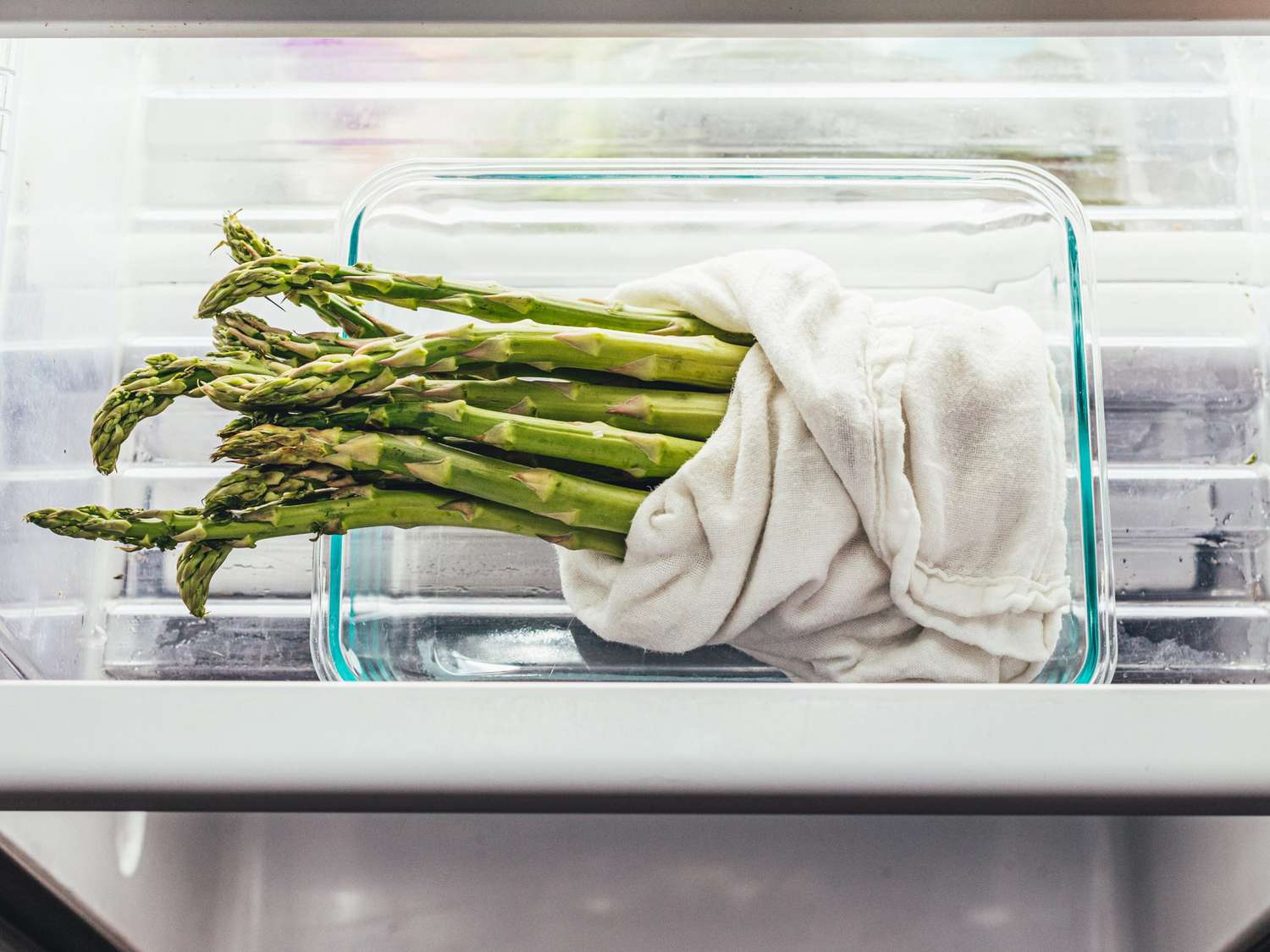
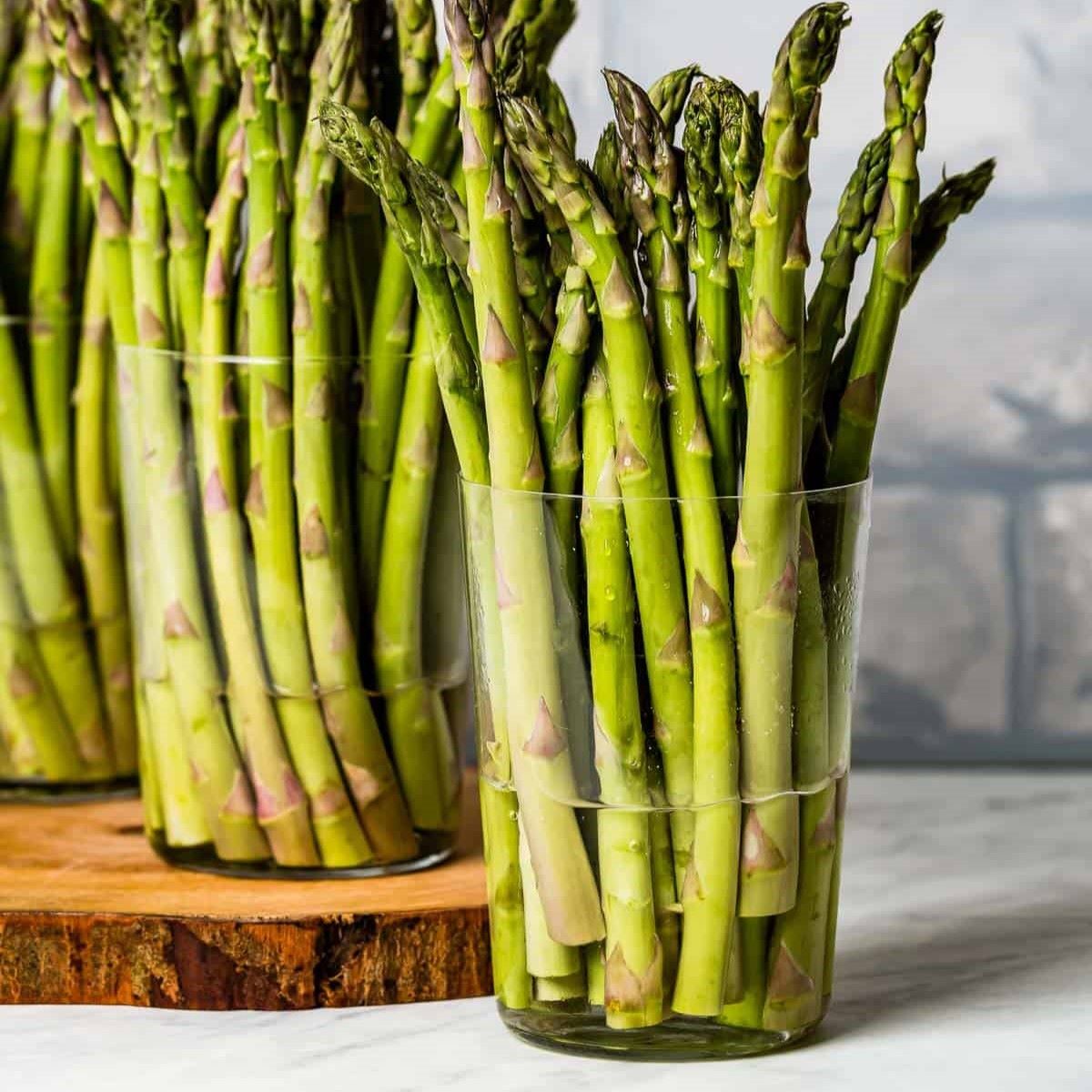
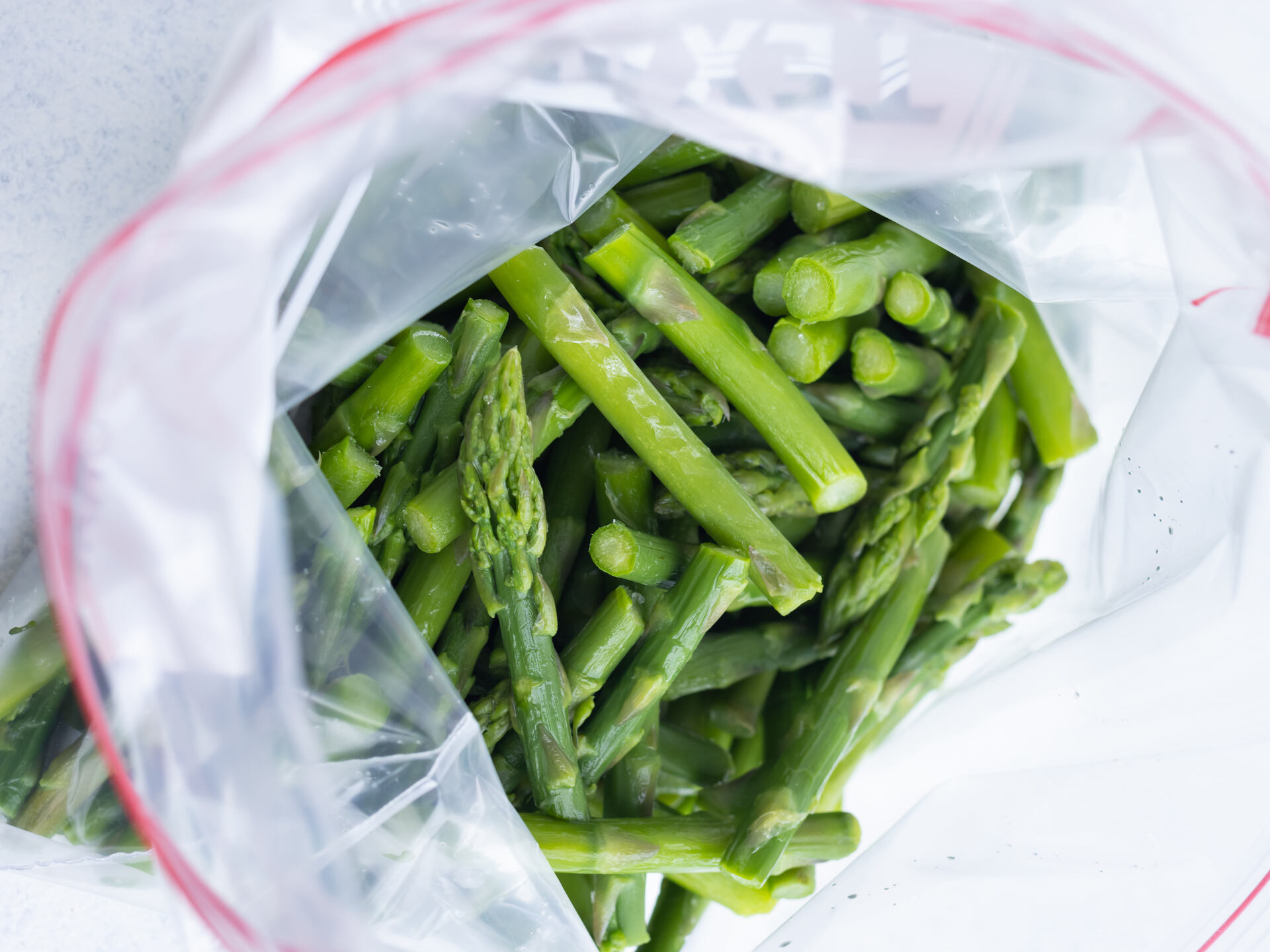


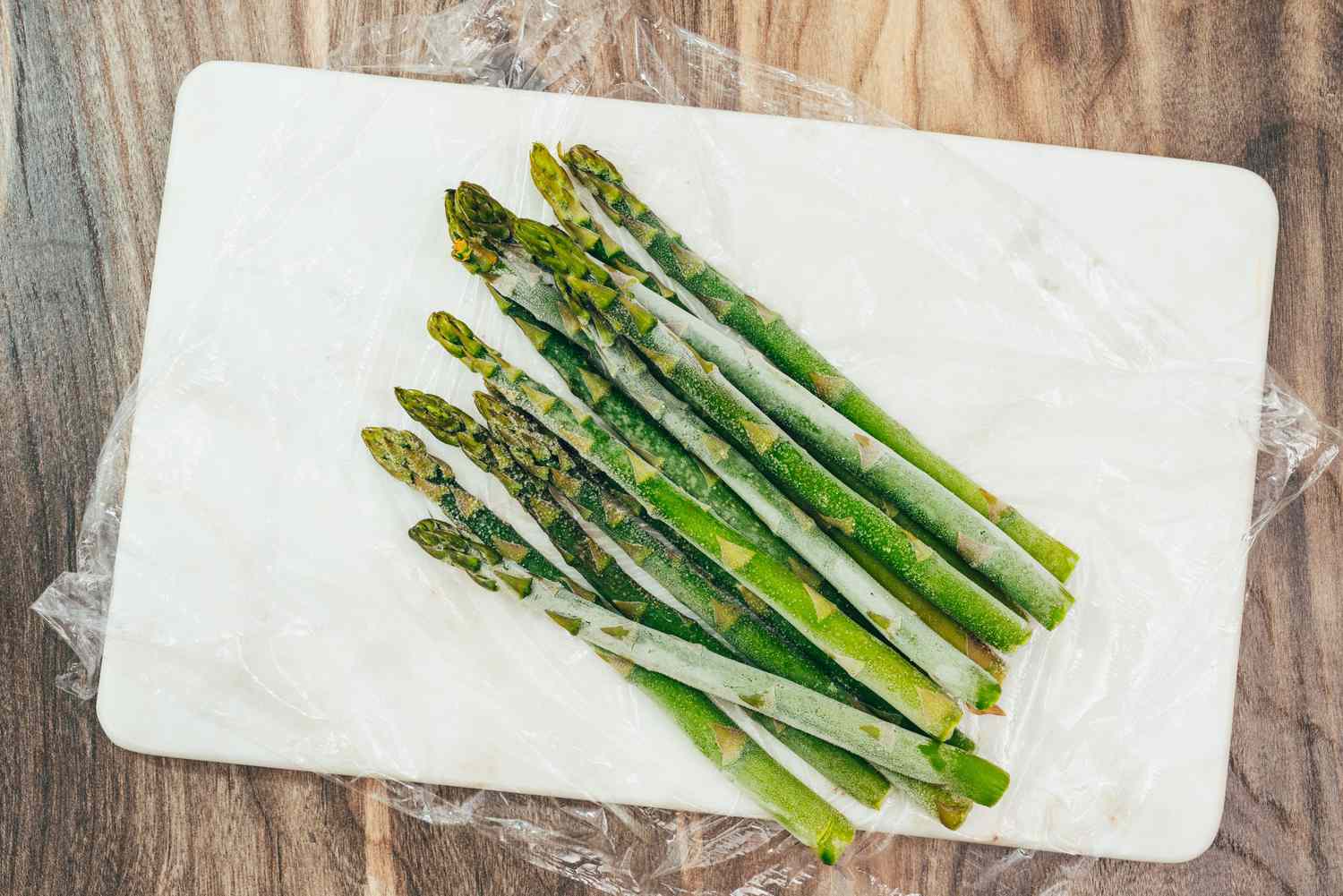
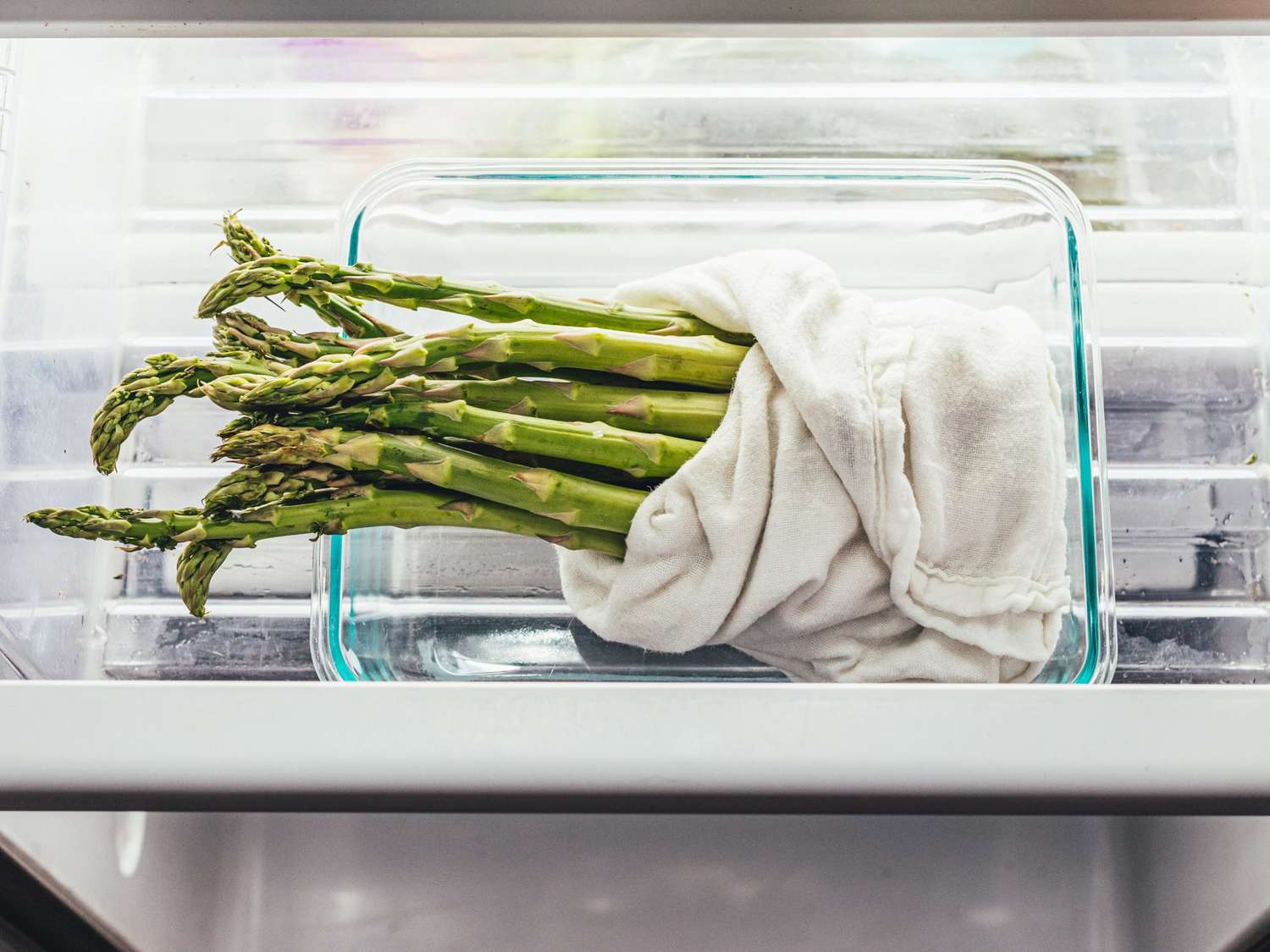


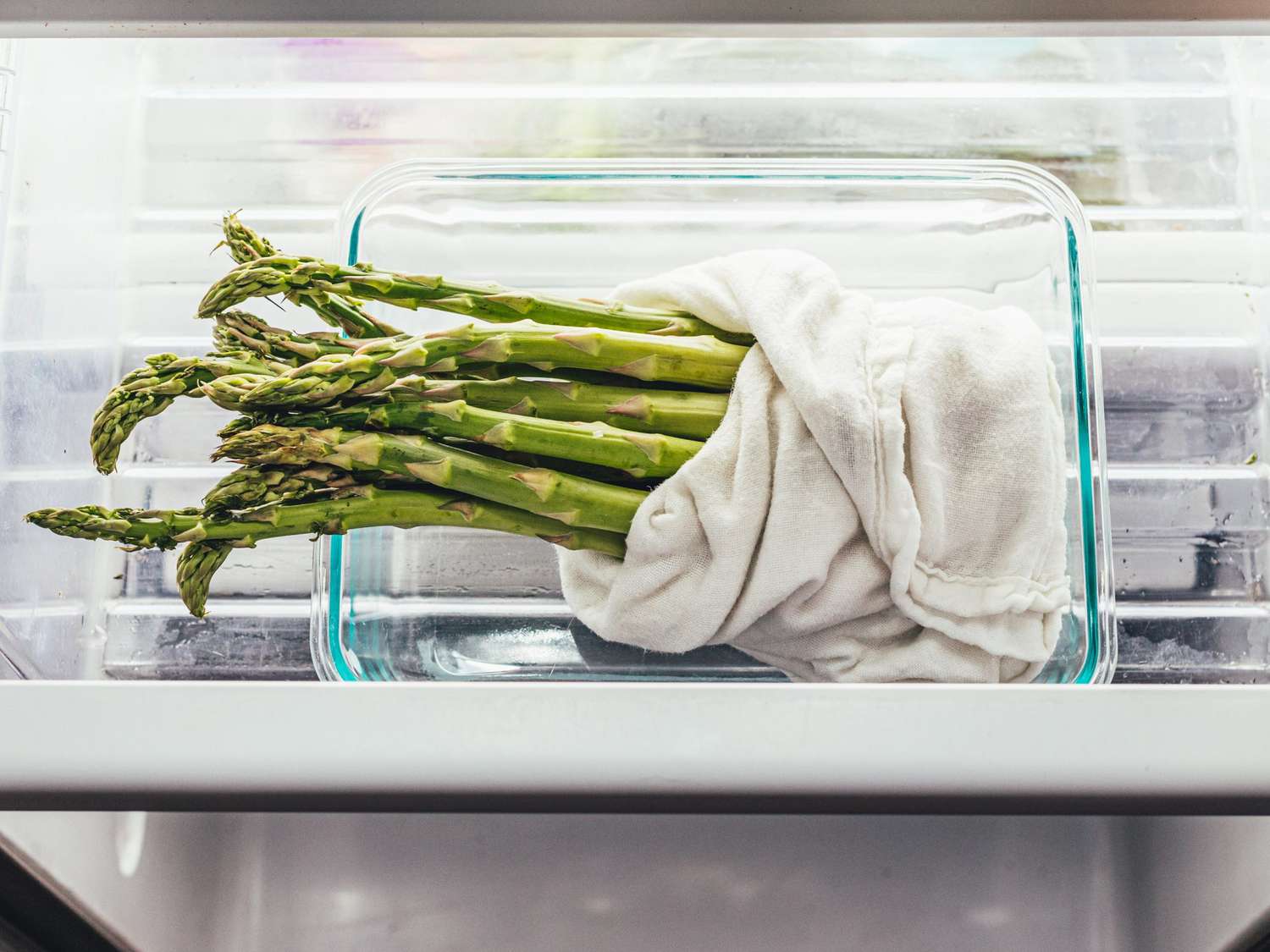
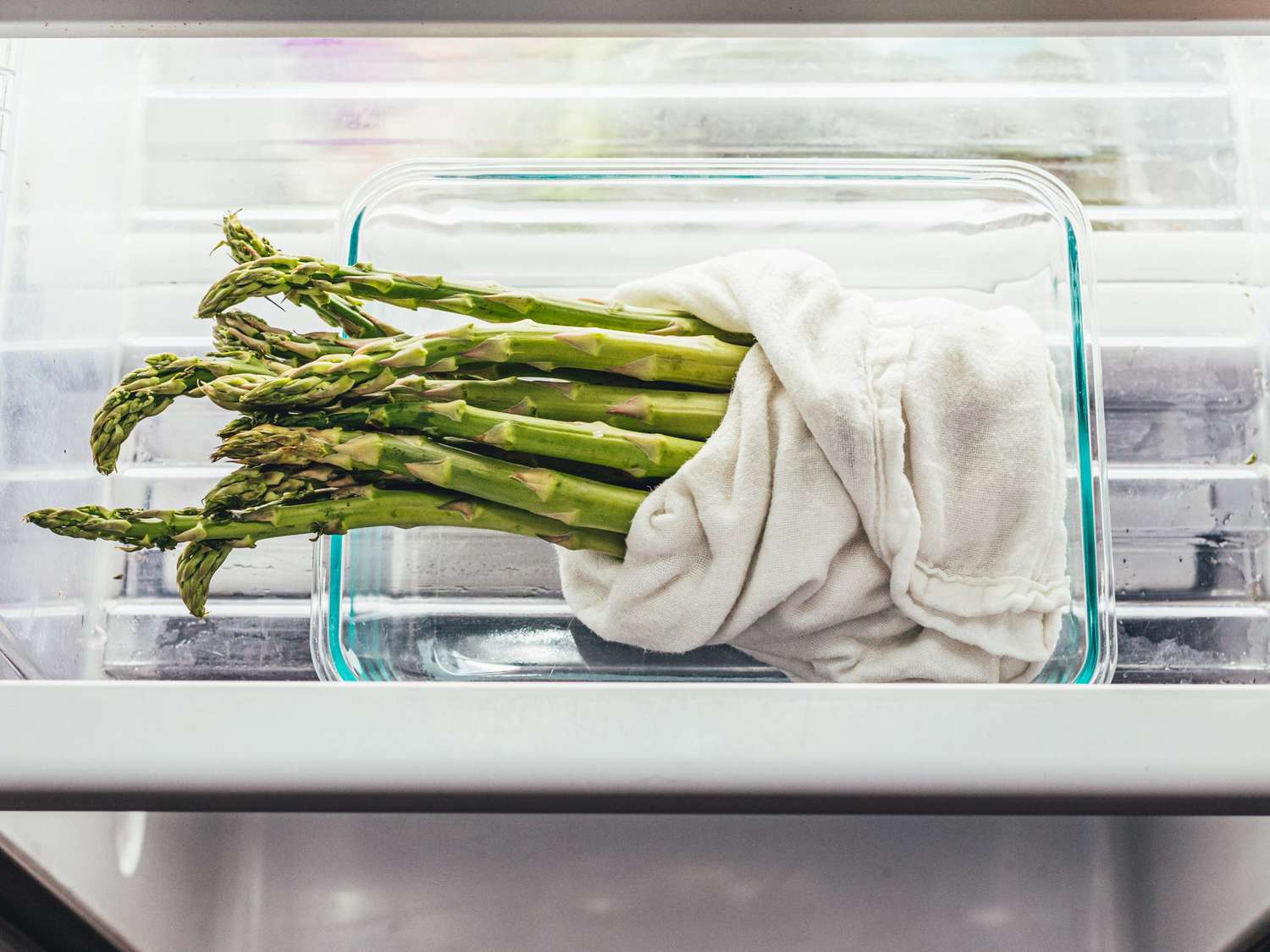
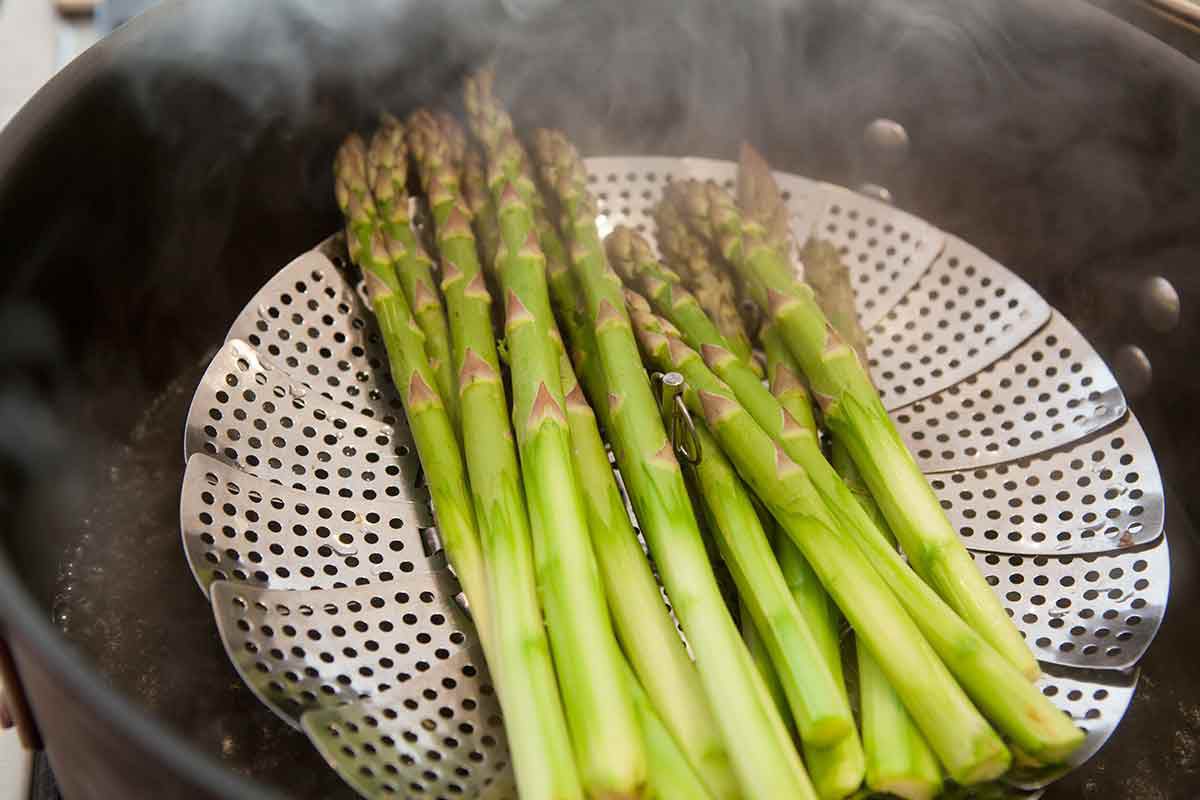
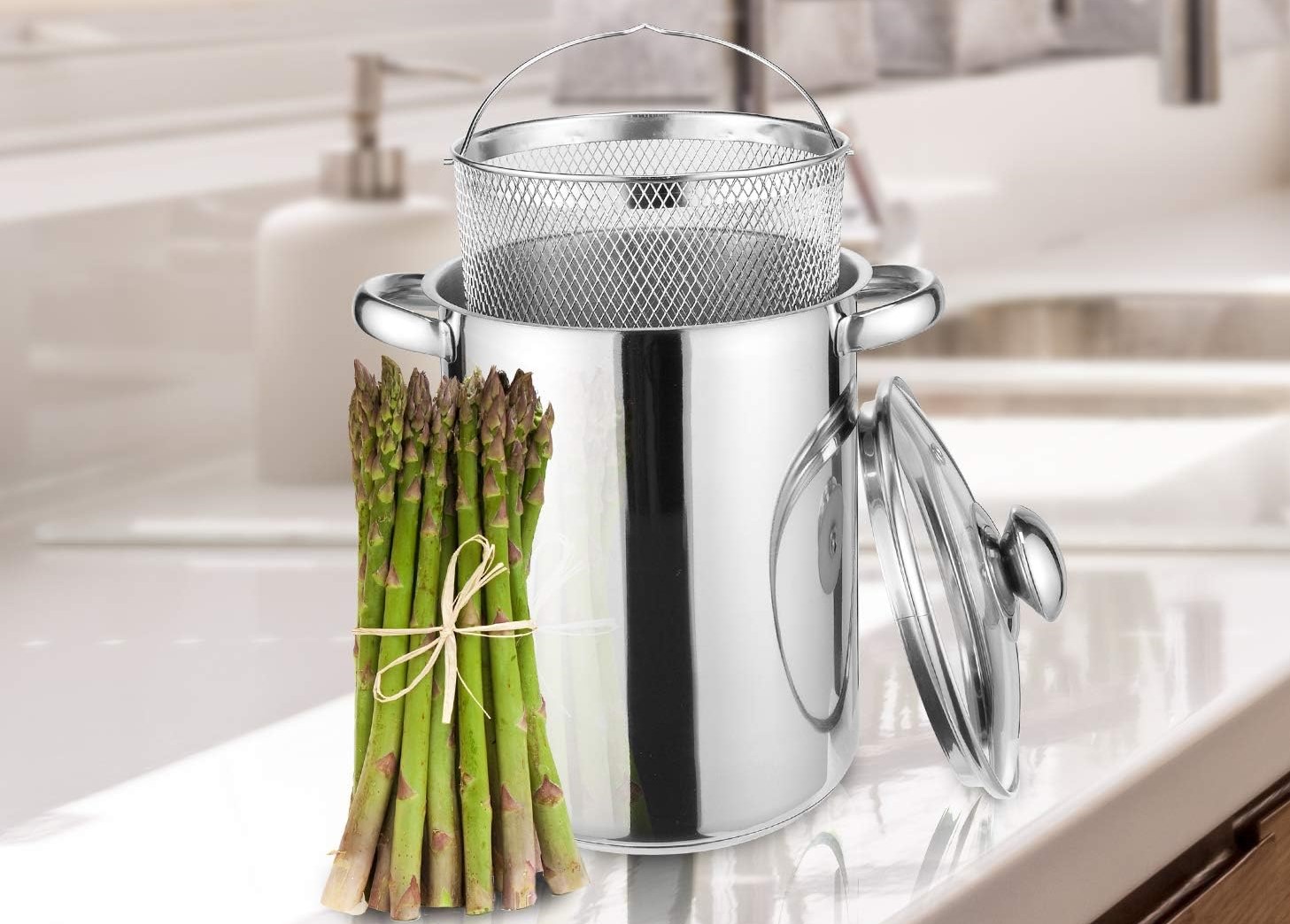


0 thoughts on “How To Store Asparagus Before Cooking”